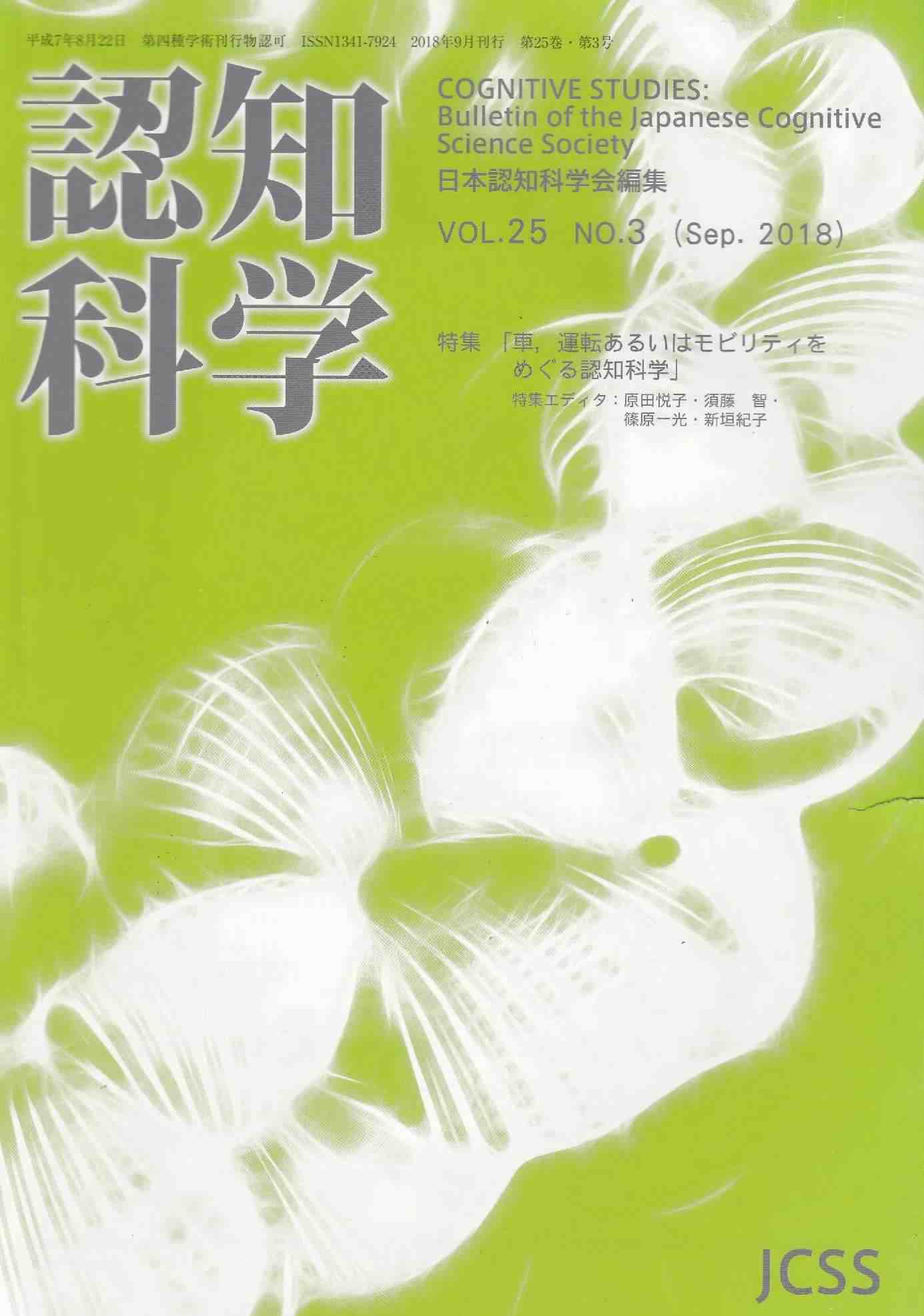Volume 25, Issue 3
COGNITIVE STUDIES
Displaying 1-14 of 14 articles from this issue
- |<
- <
- 1
- >
- >|
Foreword
-
Article type: Foreword
2018Volume 25Issue 3 Pages 225-226
Published: September 01, 2018
Released on J-STAGE: February 28, 2019
Download PDF (539K)
JCSS Fellows
-
Article type: JCSS Fellows
2018Volume 25Issue 3 Pages 227-231
Published: September 01, 2018
Released on J-STAGE: February 28, 2019
Download PDF (768K) -
Article type: JCSS Fellows
2018Volume 25Issue 3 Pages 232-237
Published: September 01, 2018
Released on J-STAGE: February 28, 2019
Download PDF (913K)
Feature: Cognitive Science of Automotive, Driving, and Mobility
-
Article type: other
2018Volume 25Issue 3 Pages 238-242
Published: September 01, 2018
Released on J-STAGE: February 28, 2019
Download PDF (811K) -
Article type: Review Paper
2018Volume 25Issue 3 Pages 243-258
Published: September 01, 2018
Released on J-STAGE: February 28, 2019
Download PDF (1511K) -
Article type: Review Paper
2018Volume 25Issue 3 Pages 259-278
Published: September 01, 2018
Released on J-STAGE: February 28, 2019
Download PDF (1169K) -
Article type: research-article
2018Volume 25Issue 3 Pages 279-292
Published: September 01, 2018
Released on J-STAGE: February 28, 2019
Download PDF (1610K) -
Article type: Research Papers
2018Volume 25Issue 3 Pages 293-309
Published: September 01, 2018
Released on J-STAGE: February 28, 2019
Download PDF (2211K) -
Article type: Research Papers
2018Volume 25Issue 3 Pages 310-323
Published: December 01, 2018
Released on J-STAGE: February 28, 2019
Download PDF (1640K) -
Article type: Research Papers
2018Volume 25Issue 3 Pages 324-337
Published: December 01, 2018
Released on J-STAGE: February 28, 2019
Download PDF (1418K) -
Article type: research-article
2018Volume 25Issue 3 Pages 338-349
Published: September 01, 2018
Released on J-STAGE: February 28, 2019
Download PDF (818K)
Literature Guide
-
Article type: Literature Guide
2018Volume 25Issue 3 Pages 351-357
Published: September 01, 2018
Released on J-STAGE: February 28, 2019
Download PDF (696K)
Book Review
-
Article type: Book Review
2018Volume 25Issue 3 Pages 358-359
Published: September 01, 2018
Released on J-STAGE: February 28, 2019
Download PDF (533K)
Dissertation
-
Article type: Dissertation
2018Volume 25Issue 3 Pages 360
Published: September 01, 2018
Released on J-STAGE: February 28, 2019
Download PDF (522K)
- |<
- <
- 1
- >
- >|
